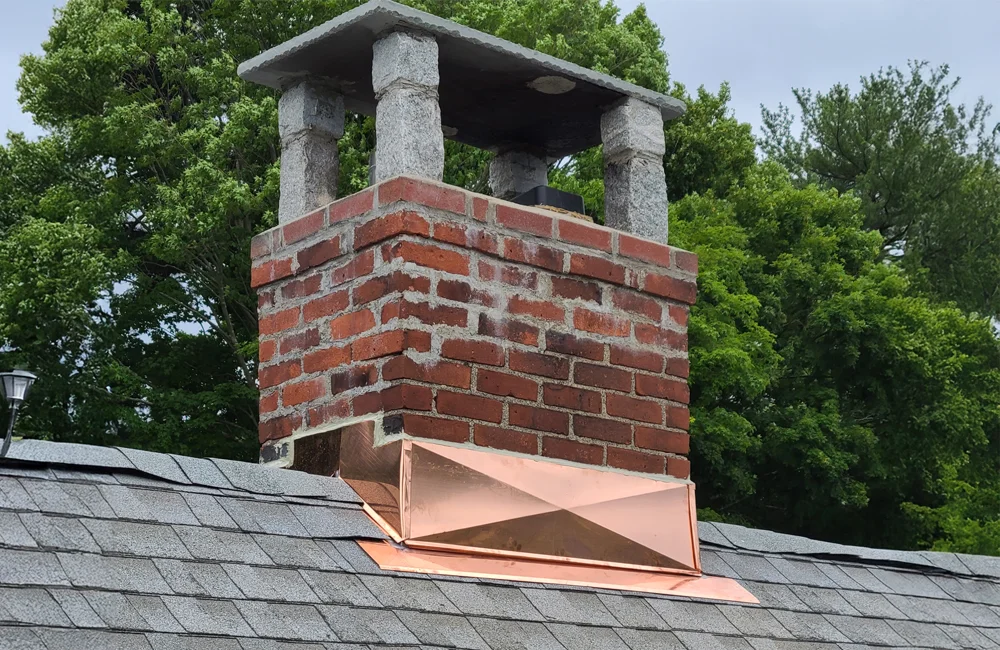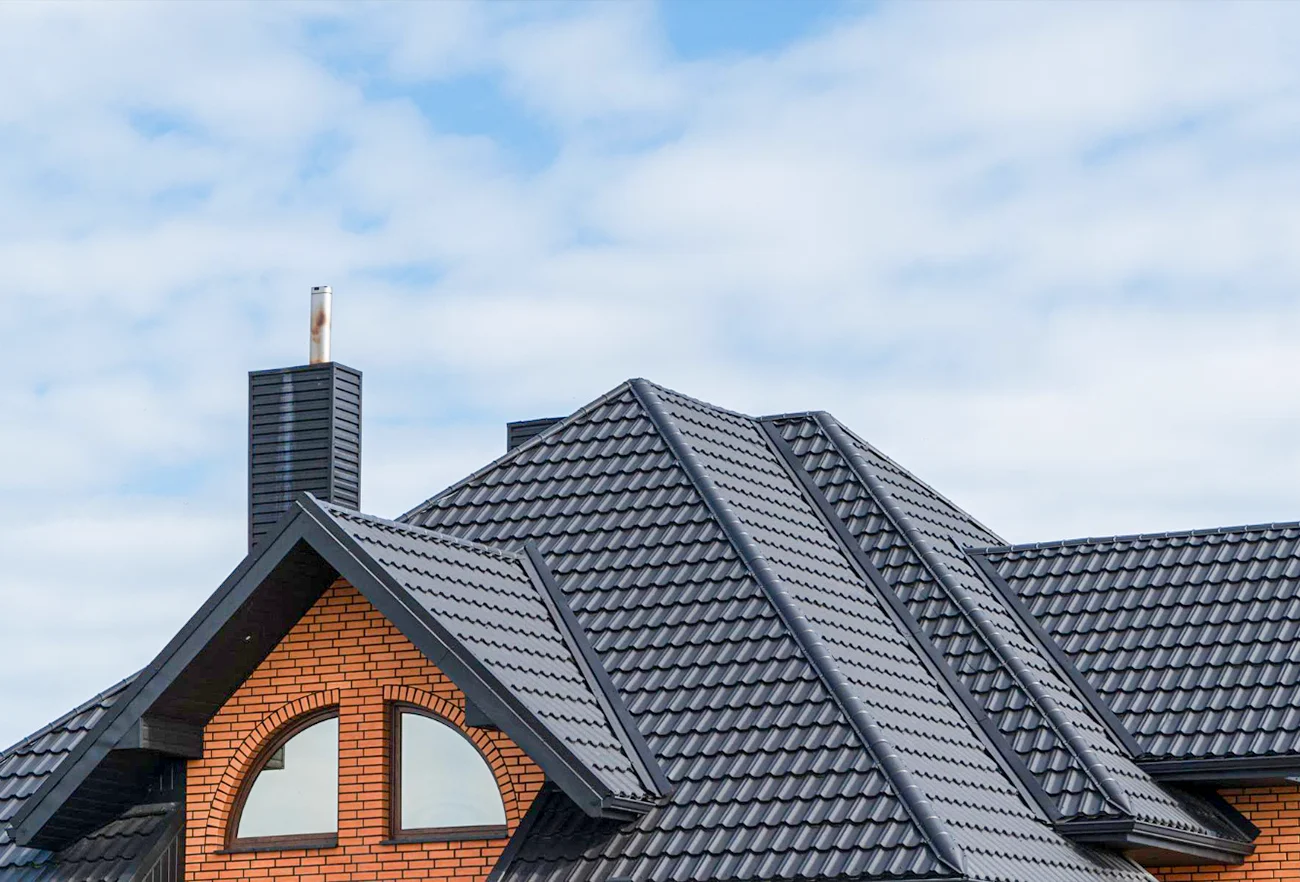When it comes to providing safety against harsh weather in Connecticut, your roof acts as your first defense system. If the roofs are strong and well-maintained, they provide better protection and safety.
There are many ways of protecting roofs, one of which is roof flashing. In a state like Connecticut, flashing protects the roof from leaks, rot, and costly structural damage.
Let’s explore more about roof flashing types, materials, and professional installation.
What is Flashing on a Roof?
Roof flashing is a thin protective barrier made of metal, mostly to divert water away from vital areas of the roof.
It seals the gaps to avoid water leakage. This unwanted water leakage not only damages the interior of the home but sometimes results in massive roof repairs. To avoid any costly roof repairs, the flashing is installed in the following areas of a roof.
- Around chimneys
- Along the roof valleys
- At the base of skylights
- Around vents and pipes
- Where the walls meet the roof surface
Types of Roof Flashing
Different sections of your roof require different flashings. Not all roof flashings are the same. Here are some types of flashing.
Step Flashing
Step flashing is installed at the point where the roof meets any vertical surface. This can be a chimney or the side of a wall. It consists of an L-shaped metal piece or many. These pieces are layered in steps along each row of shingles. This design ensures that water flows downward over each piece and does not penetrate the wall joint. It is highly useful in the spring and winter seasons when rainfall is heavy.
Counter Flashing
Counter flashing is generally used in combination with step flashing. It is also on chimneys and walls.
While step flashing goes under the roofing material, counter flashing is installed on the vertical surface, and it overlaps the step flashing. It provides an extra layer of protection to the roof.
Valley Flashing
Valley flashing is installed in the “valleys” where two roof slopes intersect. These areas naturally collect a large volume of water, making valley flashing vital. Valley flashing acts as a resistance and directs the water safely down the roof. Without appropriate valley flashing, these locations are prone to leakage.
Drip Edge Flashing
Drip edge flashing is placed at the roof edges. It directs water down from the roof and protects the walls and other structures. It prevents water from running under the shingles as well. This type of roof flashing is highly useful in protecting from ice dams and heavy storms.
Kickout flashing
Kick-out flashing is used when a roof slope meets a wall. It is also known as diverter flashing. Its purpose is to divert the rainwater away from the sides into the gutter.
Apron Flashing
Apron flashing is used at the bottom of a chimney, dormer, or any vertical structure sitting on the roof. This flashing sits flat on the roof and goes up to the vertical wall of that structure, forming an L-shape. It keeps water from getting into the joints.
Metal Roof Transition Flashing
Metal roof transition flashing is used where two different roof sections meet. Especially when they are different in pitch, material used, or height. This flashing is used because the contractions and expansions of the used material can change in different weather conditions. So, metal roof transition flashing can handle it and prevent the leakage.
Common Flashing Materials
In roof flashing, the materials matter exactly as getting the flashing done from a professional matters. Some most commonly used materials are as follows.
Aluminum Flashing
If you are looking for something lightweight and easy to install, then Aluminum flashing is the best option for you. It also becomes corrosion-resistant if it is coated. This flashing is commonly used on residential roofs because it is inexpensive and adaptable.
Galvanized Steel Flashing
If you want an industrial look and can invest a bit more in roof flashing, then galvanized steel flashing is a good choice. It is stronger than Aluminum flashing. It is zinc-coated to resist rusting.
Copper Flashing
For a long time, roof protection copper flashing has been an ideal choice. It is naturally resistant to corrosion. This flashing also provides a distinctive and elegant look. Due to its longevity in providing protection, it is on the higher side of cost.
Lead Flashing
Lead flashing is also a long-lasting type of flashing. If you have a historic home or a complex roof, then this type of roofing is perfect. However, it is not commonly installed due to its health and environmental issues.
A Quick Comparison of Materials
| Material | Durability | Cost | Look | Best For Climate |
| Aluminum | Moderate with coating | Less | Neutral and Paintable | Moderate rain and snow |
| Galvanized Steel | Initially high | Moderate | Industrial look | Cold, snowy climates |
| Copper | Excellent (50+ years) | High | Stylish vintage look | All climates, ideal for CT |
| Lead | Excellent (50+ years) | High | Traditional Historic | Historic restoration use |
Why Roof Flashing Matters
Roof flashing not only prevents water leakage, but it also comes with many other advantages.
- Keeps the ceilings and walls dry
- Prevents mold and bacteria growth
- Protects wood from rotting
- Helps insulation stay dry and work properly
- Keeps the roof strong and long-lasting
When to Change or Get a Flashing
Only having a functional flashing provides the required protection. You don’t have to replace your roof to install roof flashing. If you are having any of the following, you need a new flashing.
- You are upgrading or remodeling your home
- Undergoing roof repairs or replacements
- You notice pests entering through the roof gaps
- Notice any signs of mold or wood rot around the edges or joints
- Notice water stains
- Cracked or bent old flashing
Why Professional Installation Matters
If you want maximum return on investment, then professional installation can help. Only a professional can ensure your home stays protected for a long time. They have the skill, precision, and knowledge of how water moves on a roof. Professionals follow local CT building codes and safety standards. In the long run, a professional saves money by avoiding repeat repairs.
Why Choose Best Home Remodeling CT for Roof Flashing
If you’re in Connecticut and need a flashing, we offer a free consultation and inspection. At Best Home Remodeling CT, we specialize in expert roof flashing installation and repair. Our team has extensive local experience in the roofing field. We understand Connecticut’s harsh seasons and install flashing that keeps you safe in all seasons. Contact our experts to get a FREE quote!
Conclusion
Flashing saves your home and roof from damage. It is equally crucial to do it on time.
Not doing it on time can make the situation worse in harsh weather, when working becomes difficult, too, and the condition of the roof worsens as well.
So, inspect your roofs today and get a suitable roof flashing done.




